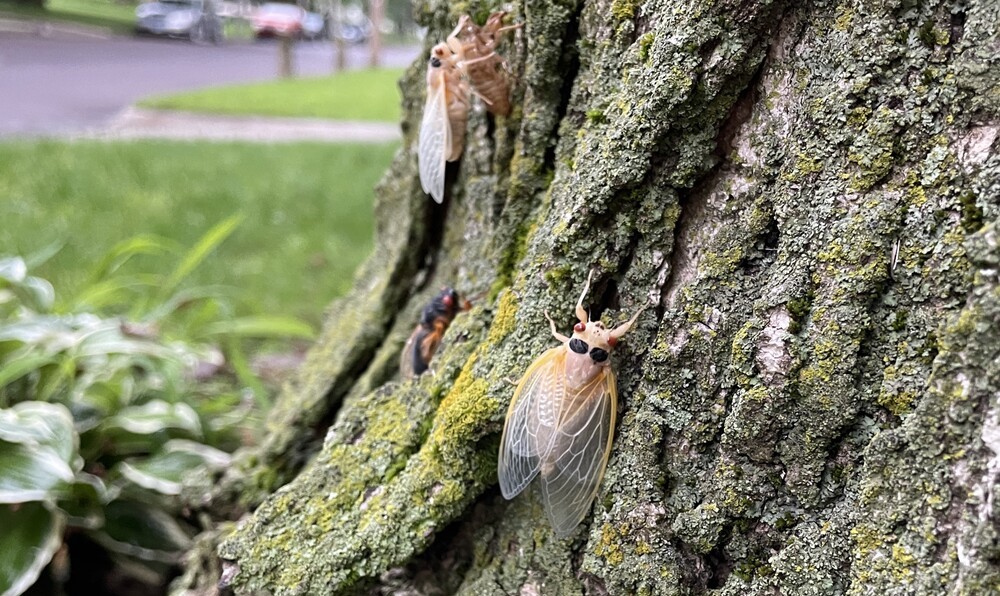Periodical cicadas are here … now what?

JACKSONVILLE, Ill — The long wait is finally over.
After spending 13 (or 17, depending on where you’re at) years underground feeding from roots, periodical cicadas have emerged (at least in central and southern Illinois). Soon, many places will be awash in cicadas. So, what can we expect now that they are beginning to emerge?
Which trees do they “attack”?
Periodical cicadas are generalists when it comes to egg-laying. They’ll lay their eggs in just about any woody plant that is the right size (around the size of a pencil, up to 0.5 inches in diameter). They do have some plants that they prefer to lay their eggs in, like oak, maple, hickory, apple, birch, dogwood, linden, willow, elm, ginkgo and pear.
If you have trees or shrubs you are concerned about, they can be covered with netting that has holes that are ¼ inch or smaller. Egg laying usually begins 7-10 days after male cicadas start singing.
Why am I seeing cicada holes in my yard but no cicadas?
Periodical cicadas will begin digging holes to the surface a few weeks before they emerge from the ground. They’ll wait underground until soil temperatures, 7 to 8 inches deep, are consistently around 64°F, at which point, they’ll emerge and molt into adults.
Are the white cicadas a different species or are males and females different colors?
These aren’t different species of cicada but rather newly molted adults that have not yet hardened. Over time, these white adults will darken and harden into the more recognizable black and orange (both males and females)
I’ve been seeing cicadas that didn’t make it out of their ‘shell’ or have deformed wings. Why is that?
If you’re out looking for cicadas, you’ll likely encounter some individuals who had a molting failure/accident. There are a variety of reasons this can happen, such as molting cicadas being knocked to the ground by wind or pesticide use. Another common reason, particularly in suburban areas, is overcrowding. In areas with very high populations, cicadas can be damaged when other cicadas crawl over them or knock them off their perch.
How loud is it really going to be?
Males will typically begin singing 5-6 days after they emerge, and how loud it gets will largely depend on the number of cicadas you have in your area. Male cicadas will group together and form chorus centers where they will begin to call for females. The more males present in those centers, the louder it will be.
What’s the point of cicadas? Do they do anything good, or are they just here to destroy our trees and scream at us?
While they may not seem like it, periodical cicadas are beneficial to our ecosystems in a number of ways.
- As they dig their tunnels to the surface, they help aerate the soil and improve water infiltration.
- Their egg-laying can provide some natural pruning to trees, which can lead to a flush of growth and increased flowering and fruit production the following year.
- When cicadas die and begin to decompose, they release nutrients into the soil, particularly nitrogen (free fertilizer).
- Periodical cicadas will serve as a food source for a wide range of animals, including birds, mammals, and insects.
Miss Clipping Out Stories to Save for Later?
Click the Purchase Story button below to order a print of this story. We will print it for you on matte photo paper to keep forever.

